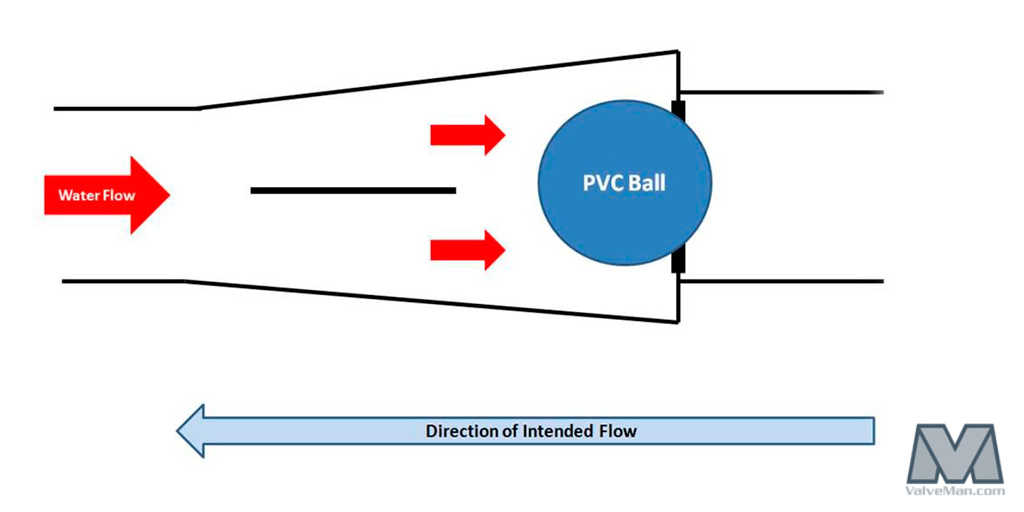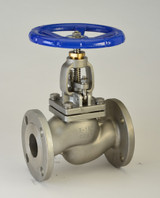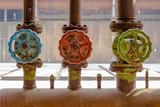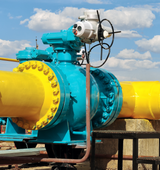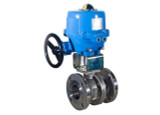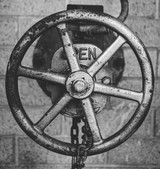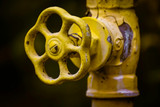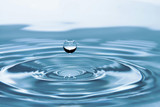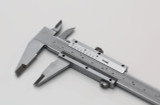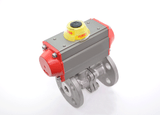Ball Check Valves
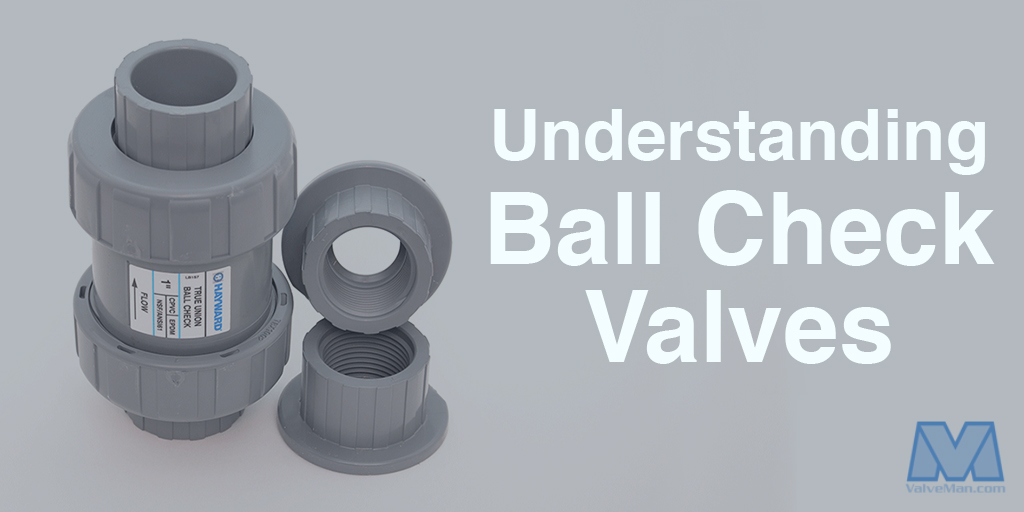
To understand ball check valves, it's best to start by learning what a ball check valve actually is and what a ball check valve actually does. By defining how they work, why they work, and what purpose they serve, you will know what to look for should you ever decide you need one. With this information, selecting the ball check valve that fits your application will be much easier.
What is a Ball Check Valve?
To answer this question in detail, let's first define what a check valve is. A check valve is simply a two port valve (one inlet and one outlet) that prevents the backward flow of a liquid or fluid within a line. This backward travel is commonly called back flow, and can cause contamination (as in drinking water), or reek havoc with refrigeration, pool, and other systems where back flow is unwanted.
There are various designs for check valves, but one of the most reliable is a ball check valve. Not to be mistaken for a ball valve, in which the ball is attached to a handle or other actuator, the ball in a ball check valve freely floats inside the housing. In other words, a ball check valve responds to the pressure, or loss of pressure, created by the fluid traveling through the valve. The actuation of the valve is essentially piloted by fluid pressure.
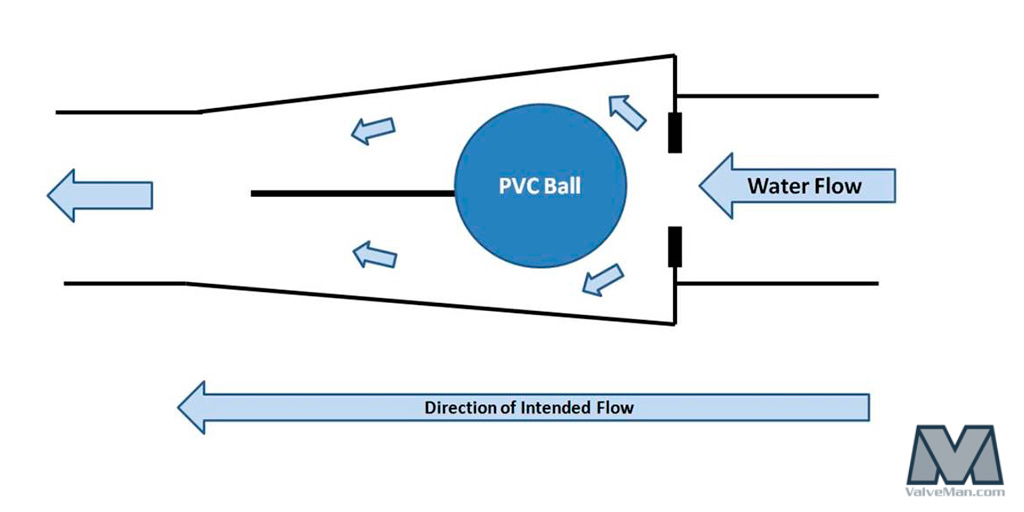
What Does a Ball Check Valve Do?
For an illustration, a ball check valve works like this: when fluid pushes against the ball with enough pressure, the ball moves to allow the fluid to travel through the valve. This is known as cracking pressure: the minimum amount of pressure needed to open the valve. If this pressure drops, or if pressure is applied to the ball from the opposite direction, the ball moves to close the valve to prevent undesirable back flow.
Because ball check valves serve this purpose, they are indispensable for countless applications and are utilized by every industry imaginable. They are common in pumps, HVAC units, irrigation units, pool plumbing systems, boilers, etc.--virtually in any application where back flow must not be permitted.
Where to Buy Ball Check Valves
Just as there are numerous applications for ball check valves, there are various designs for each one. Ball check valves may be constructed out of metals like brass, bronze, steel, stainless steel, PVC, or other thermoplastics, just to name a few. Some thermoplastic ball check valves have a ball made of similar material, and some utilize one that is steel, etc. At the ValveMan.com valve store, we carry a choice selection of the finest ball check valves available on the market today, including "true union" (removable housing) ball check valves.
We are an industrial grade valve supplier that has been in the business for over 50 years. We know all about ball check valves, and are more than happy to assist you in your selection. Unlike our competition, we only sell valves. It's simply what we do, and we do it better than anyone else.
Ball Check Valves - Related Articles
What is the cracking pressure of a check valve?
What Check Valve Should I Use for my Application?
The Perfect Check Valve for Water Processing
Introducing the Hayward TC Series True Union Ball Check Valve
Our Posts
View AllValve Materials for Gaseous Oxygen Service
Oxygen may seem safe because it is colorless, tasteless, and odorless, but in the wrong conditions, …
Read MorePneumatic Actuators Valve Types
Have you ever stopped to think about what makes an automated assembly line push, pull, lift, and rot …
Read More-320°F Liquid Nitrogen Cryogenic Control Valve Setup
Need a valve that can handle -320°F liquid nitrogen without freezing up — and still control flow? He …
Read MoreWhy Fall is the Perfect Time for Valve Maintenance (And What Happens If You Wait)
We're well into fall now, which means it's time for that conversation nobody wants to have: winter p …
Read MoreFrom the DMZ to Bonomi: Rick Wentzel’s Valve Legacy
In the inaugural episode of the Fully Open podcast, host Gil Welsford sits down with Rick Wentzel of …
Read More
Check Valve vs Backflow Preventer Comparison | ValveMan
If you need to make sure that fluid in your pipe system flows in one direction only, and prevent rev …
Read MoreDifferent Types of Gas Shut Off Valves | ValveMan
Whether you're upgrading your residential gas system, looking for the best gas shut off valve for yo …
Read MoreGlobe Valve vs Ball Valve Comparison Guide | ValveMan
Valves are widely used in industrial and manufacturing facilities, but they’re also used in utilitie …
Read MoreNEMA Ratings Explained | ValveMan
Have you ever wondered what that little NEMA number on your electric actuator meant? Or perhaps, you …
Read MoreGate Valve vs Ball Valve Comparison Guide | ValveMan
Valves are widely used in industrial and manufacturing facilities, but they’re also used in utilitie …
Read MoreValve Inspection - Main Points of Valve Inspection and Testing in Manufacturing Settings
Industrial facilities rely on different types of valves (such as gate valves, check valves and ball …
Read MoreCan Ball Valves Be Used For Flow Control?
Ball valves are widely used in plumbing and piping systems, in fact, they are one of the most common …
Read MoreIntroducing Bonomi Valves
The Bonomi Group is a leader in industrial sectors including oil and gas, hydraulics, heating and en …
Read MoreUnderstanding Valve Actuators: Manual, Electric, Pneumatic and Hydraulic
Are you a beginner new to the valve world, ready to learn more about the various types of valve actu …
Read More3 Check Valve Mistakes to Avoid
So, you’re looking for a check valve, but you’re not sure if there’s any pitfalls to look out for? O …
Read MoreTypes of Valves in Plumbing
Have you ever wondered what goes into managing the flow of water in your home, or through a building …
Read MoreIntroducing Apollo Valves
Apollo Valves® inventory includes a wide range of valve products supplied to diverse markets. These …
Read MoreTypes of Water Valves
We all know that valves play a crucial role in regulating the flow of liquids and gasses in a broad …
Read MoreUnderstanding Valve Sizes and Measurement
Sizing the appropriate valve is critical to ensuring the performance of your system. Whether you'r …
Read MoreBall Valve Types and Applications
Ball valves are important components in a vast range of systems, from small family-owned workshops t …
Read More
 888-825-8800
888-825-8800







